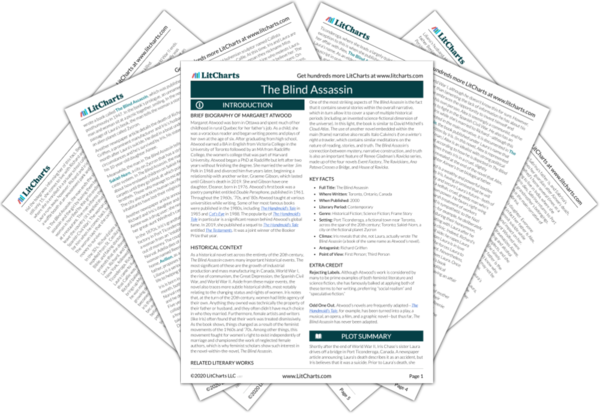This passage once again parallels the main narrative. It is a dreamlike and surreal depiction of the aftermath of the baby (Aimee’s) birth, which suggests that the woman (Iris) may be suffering from postpartum depression. She certainly seems to be detached from reality, which can occur in people who experience this condition. This is also one of the moments when the narrative of
The Blind Assassin and the main narrative clearly line up temporally, making it all the more clear that Iris, not Laura, is the woman in the embedded novel.


